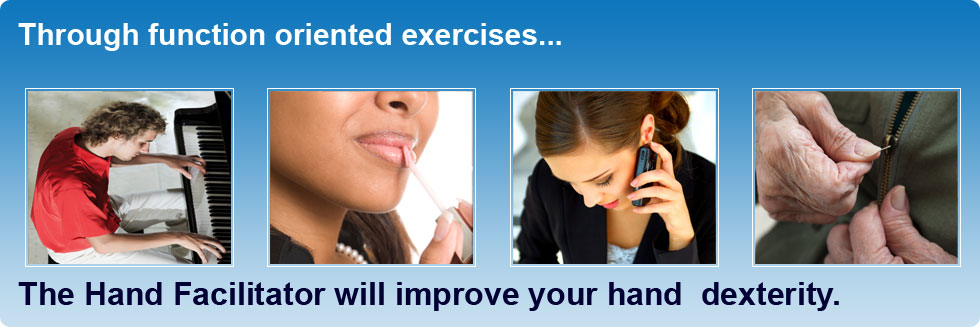Research Notes
"Bilateral Isokinematic training may essentially help to reorganize cortical motor neuronal networks."
(Study by Mudie and Matyas. 2000)
"Bilateral movement training is being increasingly used as a post-stroke motor rehabilitation protocol. The contemporary emphasis on evidence-based medicine warrants a prospective meta-analysis to determine the overall effectiveness of rehabilitating with bilateral movements. These meta-analysis Hndings indicate that bilateral movements alone or in combination with auxiliary sensory feedback are effective stroke rehabilitation protocols during the sub-acute and chronic phases of recovery."
(Kim C. Stewart, James H. Cauraugh, Jeffery J. Summers. 2005. Journal of The Neurological Sciences.)
Affiliations University of Florida Gainesville, Florida, USA
Corresponding author.
Motor Behavior Laboratory, P.O. Box 118206, University of Florida, Gainesville, Florida 32611, USA. Tel.: +1 352
"It is therefore proposed that the capability of grips be characterized as a force and moment wrench rather than only by the grip or pinch force that can be generated."
Ergonomics , 2001, VOL. 44 No 15: Characterizing human hand prehensile strength by force and moment wrench.
By Richard Wells and Michael Greig; Department of Kinesiology,
Faculty of applied Health Sciences, University of Waterloo, ON, Canada.
"Active–Passive Bilateral Therapy (APBT). APBT relies upon a device which mechanically couples the two hands. Using APBT,stroke patients actively produce rhythmic Iexion-extension of the non-paretic wrist, and mirror-symmetric movements of the paretic hand are generated through a mechanical
linkage that confers an inertial advantage."
"Priming the motor system enhances the effects of upper limb therapy in chronic stroke."
Cathy M. Stinear, P. Alan Barber, James P. Coxon, Melanie K. Fleming and Winston D. Byblow. Movement Neuroscience Laboratory, Department of Sport & Exercise Science, University of Auckland and Department of Medicine, New Zealand, 2007.
Brain. 2008. brain.oxfordjournals.org
"Those individuals with little or no distal movement are more likely to lack corticospinal tract integrity and might benefit more from bilateral training. Also mildly impaired subjects are likely to benefit from practice of bilateral task requiring bimanual dexterity as this type of training is more suitable for improving outcomes in activities of daily living."
Wiley Interscience, 10 June 2009 A review of bilateral training for upper extremity hemiparesis by Mary Ellen Soykov; Rehabilitation Institute of Chicago and Daniel M Corcos. University of Illinois at Chicago.
